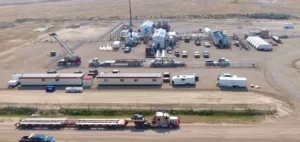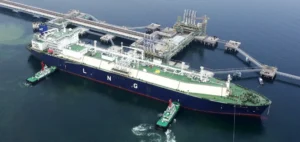Kuwait’s new energy policies highlight a clear commitment to reaching carbon neutrality by 2050. This goal is driven by the state-owned Kuwait Petroleum Corporation (KPC), which is spearheading several initiatives aimed at reducing greenhouse gas emissions, increasing reliance on liquefied natural gas (LNG), and optimizing its oil and gas facilities.
With 6.57 million tons of LNG imported in 2024, Kuwait stands as the Middle East’s largest LNG importer. This increase addresses the growing demand for electricity, particularly during the summer months when the country uses LNG to power its plants. Kuwait has also strengthened its LNG supply by signing an agreement with QatarEnergy for an additional three million tons per year until 2039. This partnership aims to meet the nation’s growing energy needs while reducing dependence on more polluting fuels.
Investments for Greener Energy Production
Kuwait is also planning significant investments in sustainable energy projects. The Ministry of Finance recently awarded a contract to build a 900-megawatt combined-cycle gas turbine plant, expected to be completed by 2025, to meet domestic energy demands. Simultaneously, several LNG production projects, such as the Al-Zour North 2 and 3 phases and the Al-Khairan IWPP, aim to add a combined capacity of 4.5 gigawatts, meeting the long-term LNG infrastructure needs.
To diversify its energy sources, KPC has launched a feasibility study on using renewable energy, with the goal of achieving 17 GW of capacity by 2050. Currently, these projects remain at a modest scale, primarily with solar panels in parking areas and public buildings.
Reducing Emissions through Refining Optimization and Recycling
Kuwait has also redefined the role of its Al-Zour refinery, one of the country’s largest, by shifting it toward lower-emission production. The refinery will now be integrated into a petrochemical complex capable of producing 2.76 million tons of aromatics and propylene annually, along with 1.7 million tons of eco-friendly fuels. This strategy enables Kuwait to maximize economic value while adopting less polluting processes.
To bolster its sustainable development strategy, KPC also plans to produce one million tons of green hydrogen annually and install 18,000 electric vehicle charging stations within and outside the country by 2050. The country aims to position itself as a regional recycling leader, with a planned capacity of 120,000 tons of plastic per year by 2050.
Increased Efforts to Eliminate Gas Flaring
Gas flaring management is central to KPC’s emissions reduction efforts. Since 2020, the country has reduced its flaring rate to below 1%, down from 17% in 2005. This commitment extends to shared production areas, notably with Saudi Arabia in the neutral zone. The Kuwait Gulf Oil Company (KGOC), responsible for this area, aims to achieve a 1% flaring rate in the near future.
Kuwait aspires to eradicate routine flaring across its facilities by 2030 for domestic assets and by 2040 for all subsidiaries. Simultaneously, the state-owned Kuwait National Petroleum Corporation (KNPC) adopts emission reduction technologies, such as heat recovery, to enhance its refining and gas liquefaction operations.
Progressively phasing out gas flaring and transitioning to cleaner fuels position Kuwait as a model for energy transition in the Middle East. KPC’s ambition to maintain low-carbon oil production capacity aligns with a broader strategy that could reshape the country’s role in the global energy landscape.





















